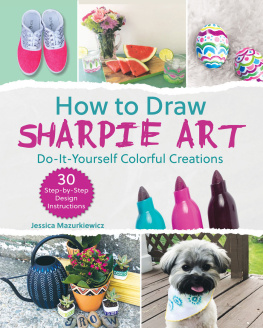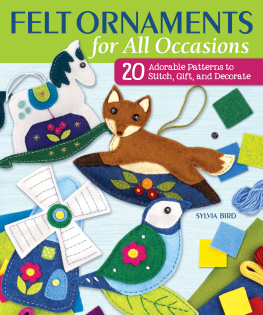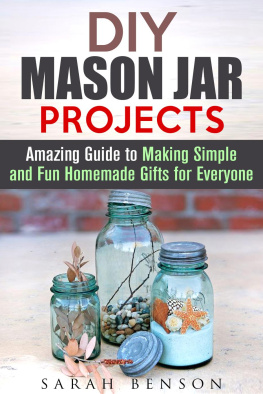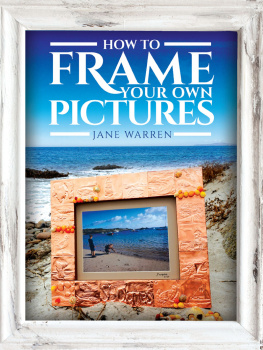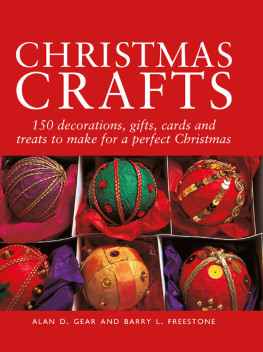

Copyright 2019 by Jessica Mazurkiewicz
All rights reserved. No part of this book may be reproduced in any manner without the express written consent of the publisher, except in the case of brief excerpts in critical reviews or articles. All inquiries should be addressed to Racehorse Publishing, 307 West 36th Street, 11th Floor, New York, NY 10018.
Racehorse Publishing books may be purchased in bulk at special discounts for sales promotion, corporate gifts, fund-raising, or educational purposes. Special editions can also be created to specifications. For details, contact the Special Sales Department, Skyhorse Publishing, 307 West 36th Street, 11th Floor, New York, NY 10018 or .
Racehorse Publishing is a pending trademark of Skyhorse Publishing, Inc., a Delaware corporation.
Visit our website at www.skyhorsepublishing.com.
10 9 8 7 6 5 4 3 2 1
Library of Congress Control Number: 2019912314
Cover design by Kai Texel
Cover and interior photography by Jessica Mazurkiewicz
Print ISBN: 978-1-63158-354-4
Ebook ISBN: 978-1-63158-355-1
Printed in China
CONTENTS
INTRODUCTION
I first realized the transformative power of Sharpies in my terrible tweens when I stubbornly insisted on a flimsy backpack, which, of course, meant the straps broke very early in the school year. Embarrassed by my blunder, I decided to decorate my bag to distract from the fact that it no longer functioned as a backpack and instead had to be carried more like an infant. I started with one doodle, and before I knew it the entire bag was covered in art, much like a tattoo sleeve. Yes, the backpack was replaced the following year, but the experience and delight in creating something so uniquely personal stuck with me. I also learned a wonderful lesson about how an object can be re-imagined, re-invented, and re-used by adding some decoration and personal flair.
I hope that you enjoy these ideas and that they are a great jumping-off point for your own designs. Remember, there are no rulesjust embrace the imperfect. The charm in something hand drawn is that it is unique and not mass produced.
Happy Drawing, Doodling, and Creating!
Jess
CHAPTER 1

MATERIALS AND GETTING STARTED
Markers, markers, markers, and of course something to decorate
So youre probably wondering why a whole chapter is devoted to supplies... dont you just need a marker and something to draw on? The answer is of course, yes... and no. Amazing things can be created with just one marker and a surface to decorate, but there are many additional supplies and tools that can enhance your Sharpie experience.
Its also lovely to have a variety of colors and brush tips to layer with and to vary line thickness. For instance, if you want a large area of solid color it would be silly to use a Fine tip marker to fill it in when a big chunky marker will make quick work of the job.
There are a variety of marker tips to choose from:
- Fine

- Ultra Fine

- Brush

- Chisel

- Super

When choosing a marker, you want to consider the size of the object you are decorating and also the kind of lines that you would like to draw. You also want to consider the surface that you are decorating. For example, you want an oil-based marker for decorating ceramics and glassware and a stain marker for decorating fabric. Test your marker on a material similar to the surface that you will be decorating, if possible. For instance, if youre going to be working on fabric dont test on paper because inks react differently depending on the surface type. Testing the color is always a good idea as well. There is often a difference between the cap color and the ink color.
To get the most out of your markers, make sure to close their caps securely. Horizontal storage is best for the longevity of the ink.
A SURFACE TO DECORATE
Before going online or out to the store for items to decorate, check your give away/discard/donate pile and local garage sales. Many items can be revitalized with a coat of spray paint, and a freshly painted surface is a delight to decorate. Even items that seem too shabby are still useful for testing out your ideas and getting a feel for different materials and techniques. Your designs will benefit greatly from practice on an old shirt, glass jar, chipped flower pot, worn wallet, or shabby sneakers.
Once youve exhausted the surface decorating options available in your home its time to look elsewhere. Michaels and other craft stores have a huge variety of items in assorted shapes and sizes to choose from that are waiting on the shelf to be personalized with your handiwork.
Decorating items that are costly can be intimidating, so look for less expensive items and even bulk items when possible to give multiple opportunities for experimentation and decoration. Dollar and discount stores can be an amazing resource as well. When selecting your item, its good to take the finish into consideration as inks will adhere best to matte surfaces.
OPTIONAL SUPPLIES
These are some additional items that are helpful to have but are not absolutely necessary.
- Baking sheet: Many of the projects go in the oven for brief periods of time to prolong the life of your artwork. A baking sheet can be used for putting multiple objects in the oven. Its also handy in case your object falls over or is small and doesnt balance well on the oven rack.
- Cardboard: Most projects in this book recommend the use of cardboard. It can be placed underneath your project to keep your work surface ink free, or you can cut out a piece to fit inside a T-shirt or tote bag to give it structure while you apply your decoration and to keep the ink from bleeding through.
- Clothes dryer: Useful for heat sealing projects on fabric after they are completed, clothes dryers are an alternative to heat sealing with a hot iron.
- Contact paper: Contact paper can be used to create your own custom shapes. It also works well for masking areas when you are applying a clear spray finish.
- Cotton balls, cotton swabs, and paper towels: These are great for general cleaning and applying rubbing alcohol or paint/varnish to targeted areas.
- Disposable gloves: Gloves can be worn to keep your hands clean and prevent your skin from coming into contact with harsh chemicals.
- Fine grit sandpaper: If you are prepping a surface for spray painting, a light sanding is usually needed in order to get the best results as it removes imperfections while creating a more ideal surface for the paint to adhere to. Individual sheets are recommended, as opposed to sanding blocks, as they are easier to use to get around curves and into tiny areas.
Next page
